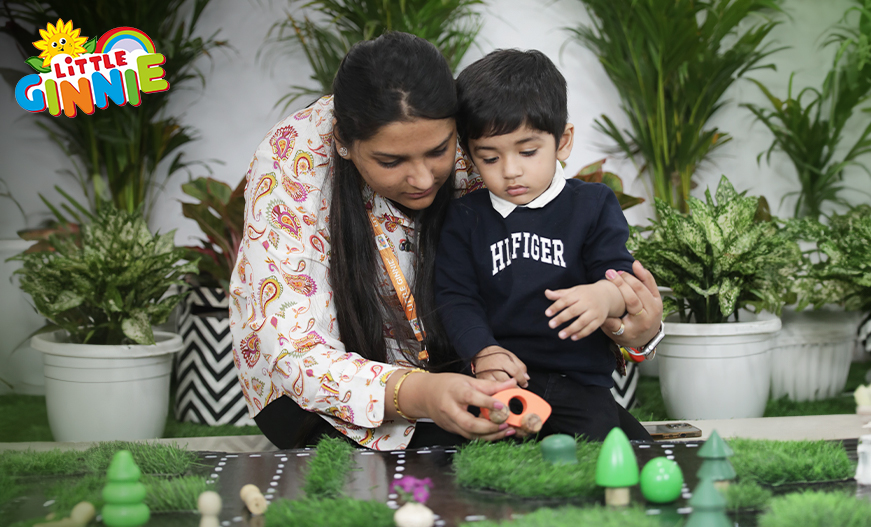
Are you ready to engage your child’s senses and ignite their curiosity? How can you create a stimulating environment for children to explore different textures, sounds, and smells? What activities can you do to encourage sensory playgroup activities and foster a love for learning?
If you’re curious about sparking your child’s imagination, stay tuned for nine exciting sensory playgroup activities that will captivate and inspire!
4 Major Benefits of Sensory Play
- Brain development
- Motor skills development
- Sensory processing
- Social interaction
Sensory play stimulates neural pathways in the brain, promoting cognitive development and learning. Numerous studies by researchers have shown that sensory play can enhance memory, problem-solving skills, and creativity.
Sensory activities that involve movement and manipulation of materials help children develop gross and fine motor skills. These skills are essential for tasks like walking, running, grasping objects, and writing.
Sensory play helps children learn to process and integrate sensory information from their environment. This can improve their ability to regulate emotions, focus attention, and adapt to new situations.
Sensory playgroups provide opportunities for children to socialize and cooperate with their peers. They learn to take turns, share materials, and communicate effectively.
9 Engaging Sensory Playgroup Activities
- Rainbow Rice Sensory Bin
- Materials
- Instructions
- Sensory focus
- Playdough Extravaganza
- Materials
- Instructions
- Sensory focus
- Ocean Sensory Bin
- Materials
- Instructions
- Sensory focus
- Shaking Surprise Eggs
- Materials
- Instructions
- Sensory focus
- Scented Playdough Discovery
- Materials
- Instructions
- Sensory focus
- Dance Party with Streamers
- Materials
- Instructions
- Sensory focus
- Oobleck Fun
- Materials
- Instructions
- Sensory focus
- Foaming Fun
- Materials
- Instructions
- Sensory focus
- Sensory Scavenger Hunt
- Materials
- Instructions
- Sensory focus
Uncooked rice, food coloring, clear plastic bin, spoons, scoops, plastic cups.
Divide the rice into portions and color each with a different food coloring (ensure that colors are safe for children). Spread the colored rice out to dry completely. Once dry, combine all the colored rice in a clear plastic bin. Provide children with spoons, scoops, and cups to explore the different textures and colors.
Touch, sight.
Store-bought playdough or homemade playdough recipes, cookie cutters, rolling pins, and various craft materials (buttons, beads, googly eyes).
Provide children with a variety of playdough colors and different tools for shaping and molding. Offer cookie cutters to create fun shapes. Incorporate craft materials like buttons, beads, and googly eyes to encourage creative play.
Touch, smell (depending on playdough ingredients).
Blue plastic bin, water beads, plastic sea creatures, toy boats, sand, and shells (ensure all materials are safe for children).
Fill the plastic bin with water beads (soaked and expanded beforehand). Add plastic sea creatures, toy boats, sand, and shells to create an underwater scene. Children can explore the textures of the water beads and sand while using their imaginations to create ocean adventures.
Touch, sight.
Plastic eggs, various dry grains (beans, rice, pasta), small bells, or other noisemakers.
Fill each plastic egg with a different type of dry grain and a small bell or noisemaker. Seal the eggs securely. Children can shake the eggs and listen to the different sounds each one makes. This activity can be used for color sorting by using different colored plastic eggs and dry grains.
Hearing, touch.
Homemade playdough scented with different extracts (vanilla, almond, lemon), and blindfolds (optional).
Prepare playdough scented with different extracts, ensuring scents are safe and pleasant for children. Children can explore the playdough with their eyes closed (optional) and identify the different scents.
Smell, touch.
A music player with upbeat music and colorful streamers.
Put on some lively music and provide children with streamers. Encourage them to move their bodies to the music, waving and dancing with the streamers.
Movement (proprioception), hearing.
Cornstarch, water, and food coloring (optional).
Combine cornstarch and water to create a thick, oozing mixture (consistency similar to thick pancake batter). Add food coloring for a visual twist (optional). Children can explore the unique texture of oobleck, which is solid when squeezed but flows like a liquid when left undisturbed.
Touch.
Shallow plastic bin, dish soap, water, whisk.
Fill a shallow plastic bin with water and add a generous amount of dish soap. Provide children with whisks or other tools for creating foam. They can experiment with whisking motions to create mountains of bubbles and explore the foam’s fleeting, light texture.
Touch, sight.
List of different textures (soft, rough, smooth, bumpy), blindfolds (optional).
Prepare a list of different textures (e.g., soft fur, rough sandpaper, smooth glass, bumpy carpet). Children can embark on a sensory scavenger hunt around the playgroup space, blindfolded (optional) to heighten their sense of touch, searching for items that match the textures on the list.
Touch.
Some Special Considerations
- Always supervise children closely during sensory play activities, especially those involving small parts or water.
- Adapt activities to suit different age groups and abilities.
- Provide opportunities for open-ended exploration and encourage children to use their imaginations.
- Most importantly, have fun! Sensory play should be a joyful and engaging experience for both children and caregivers.
Sensory play is a vital component of a child’s development. We encourage you to incorporate these fun activities into your playgroup or home environment. Share your experiences and creative sensory play ideas in the comments below!
FAQ – Frequently Asked Questions
Q: How often should I incorporate sensory play activities?
A: Sensory play can be integrated into your child’s daily routine. Even short bursts of sensory exploration can be beneficial. Aim for a few sensory play activities each week, but be flexible and follow your child’s interests.
Q: What are some additional tips for creating a sensory play space?
A: Choose a safe and clean area with easy-to-clean surfaces. Provide a variety of textures, materials, and tools for exploration. Rotate activities regularly to keep things fresh and engaging.
Q: Are there any resources available to find more sensory play ideas?
A: Absolutely! Numerous websites and books are dedicated to sensory playgroup activities. Consider checking out your local library or searching online for inspiration.
Incorporating sensory play into your playgroup or home environment can nurture your child’s development and create lasting memories filled with laughter, exploration, and discovery.









